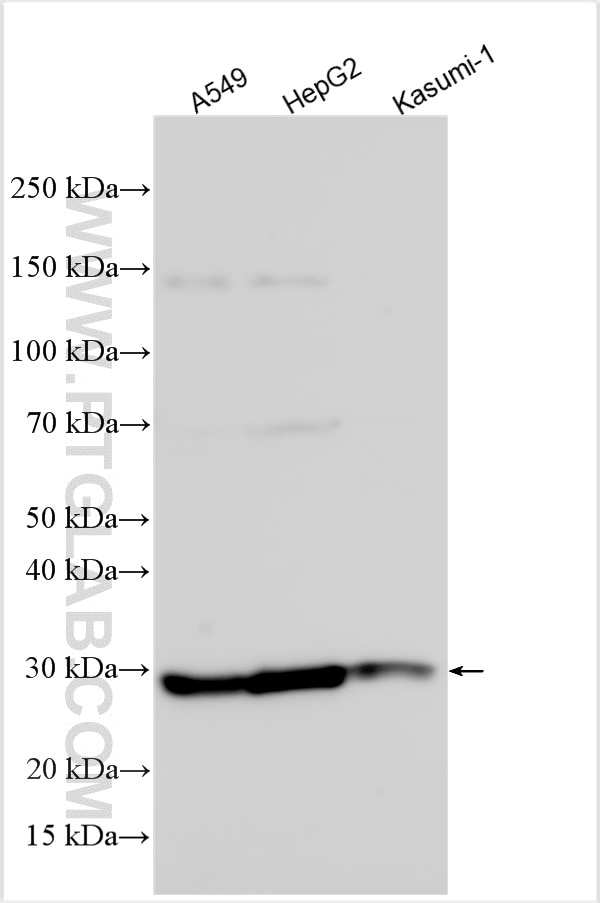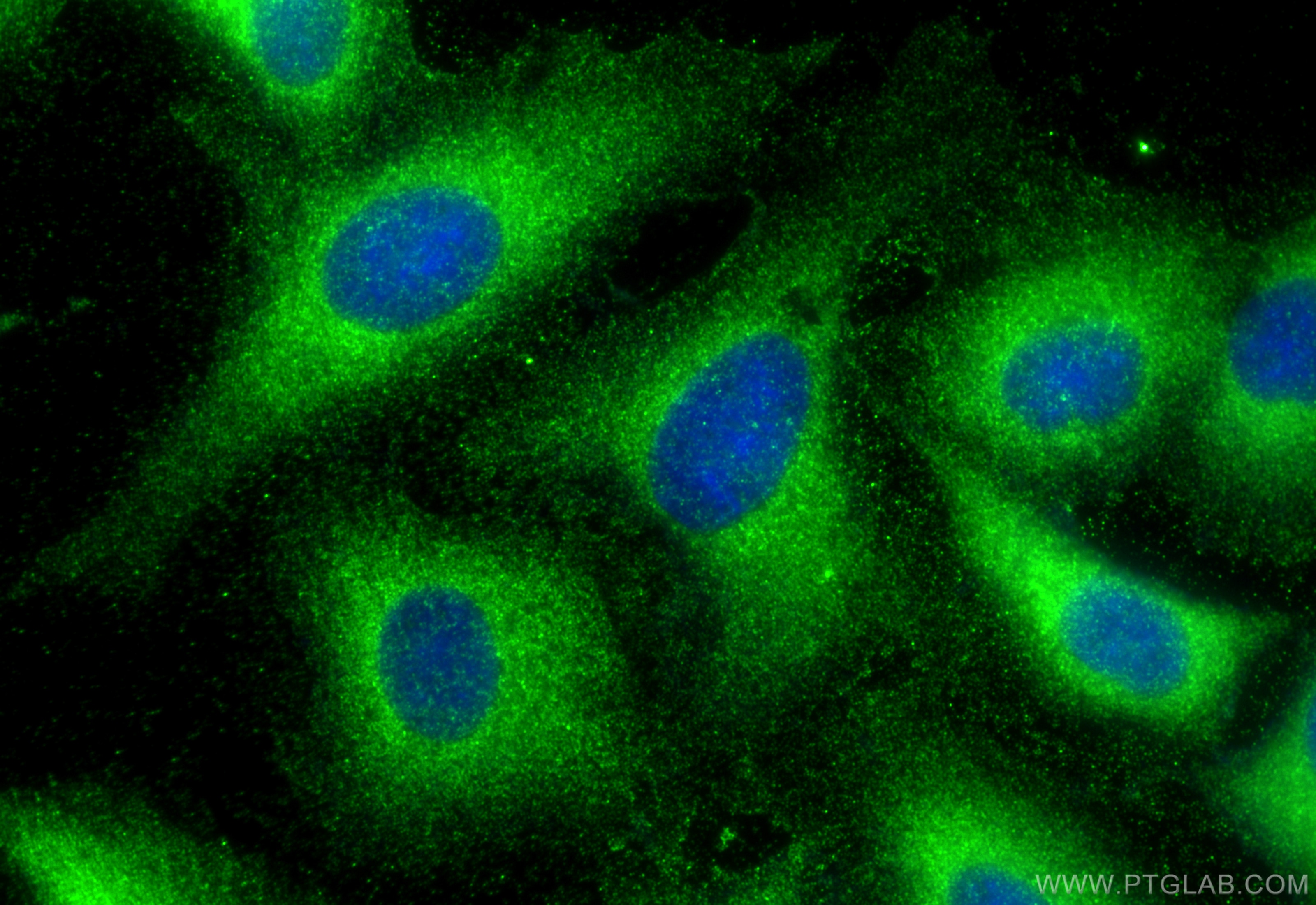Validation Data Gallery
Tested Applications
| Positive WB detected in | A549 cells, HepG2 cells, Kasumi-1 cells |
| Positive IF/ICC detected in | A549 cells |
Recommended dilution
| Application | Dilution |
|---|---|
| Western Blot (WB) | WB : 1:2000-1:10000 |
| Immunofluorescence (IF)/ICC | IF/ICC : 1:200-1:800 |
| It is recommended that this reagent should be titrated in each testing system to obtain optimal results. | |
| Sample-dependent, Check data in validation data gallery. | |
Product Information
32117-1-AP targets SBK2 in WB, IF/ICC, ELISA applications and shows reactivity with human samples.
| Tested Reactivity | human |
| Host / Isotype | Rabbit / IgG |
| Class | Polyclonal |
| Type | Antibody |
| Immunogen | SBK2 fusion protein Ag37233 相同性解析による交差性が予測される生物種 |
| Full Name | SH3-binding domain kinase family, member 2 |
| Calculated molecular weight | 38 kDa |
| Observed molecular weight | 30 kDa |
| GenBank accession number | NM_001101401 |
| Gene Symbol | SBK2 |
| Gene ID (NCBI) | 646643 |
| RRID | AB_3670197 |
| Conjugate | Unconjugated |
| Form | Liquid |
| Purification Method | Antigen affinity Purification |
| UNIPROT ID | P0C263 |
| Storage Buffer | PBS with 0.02% sodium azide and 50% glycerol{{ptg:BufferTemp}}7.3 |
| Storage Conditions | Store at -20°C. Stable for one year after shipment. Aliquoting is unnecessary for -20oC storage. |
Background Information
SH3 domain binding kinase family member 2 (SBK2, also known as SGK069), is an evolutionarily conserved putative serine/threonine protein kinase that plays a crucial role in cardiomyocyte differentiation, particularly in the formation and maintenance of sarcomeres. It is highly atrium-enriched and is muscle-specific, indicating its specialized function in cardiac muscle cells (PMID: 35587025). SBK2 may be useful for identifying and co-registering tumor borders during surgical resection (PMID: 23730413).
Protocols
| Product Specific Protocols | |
|---|---|
| WB protocol for SBK2 antibody 32117-1-AP | Download protocol |
| IF protocol for SBK2 antibody 32117-1-AP | Download protocol |
| Standard Protocols | |
|---|---|
| Click here to view our Standard Protocols |

